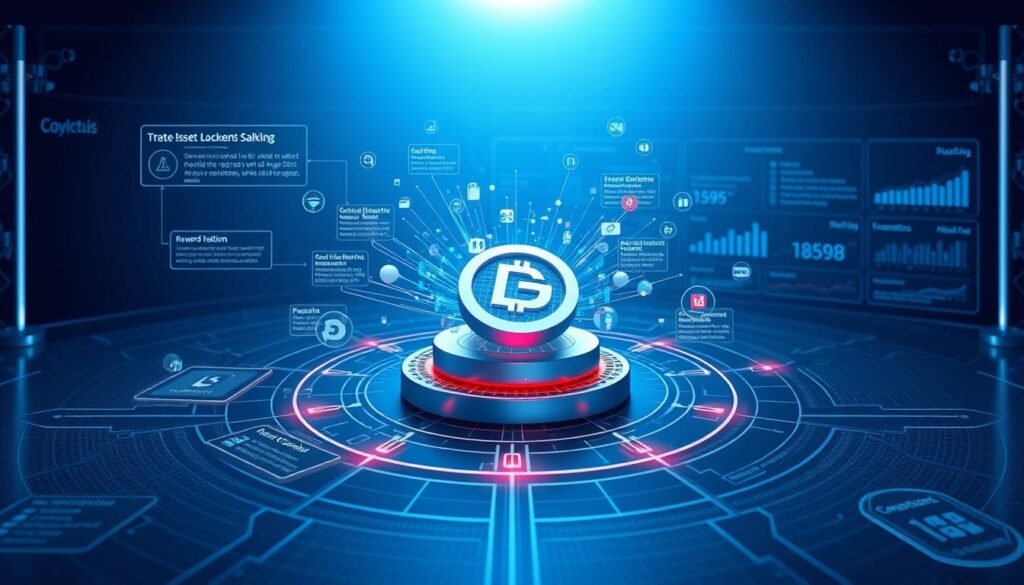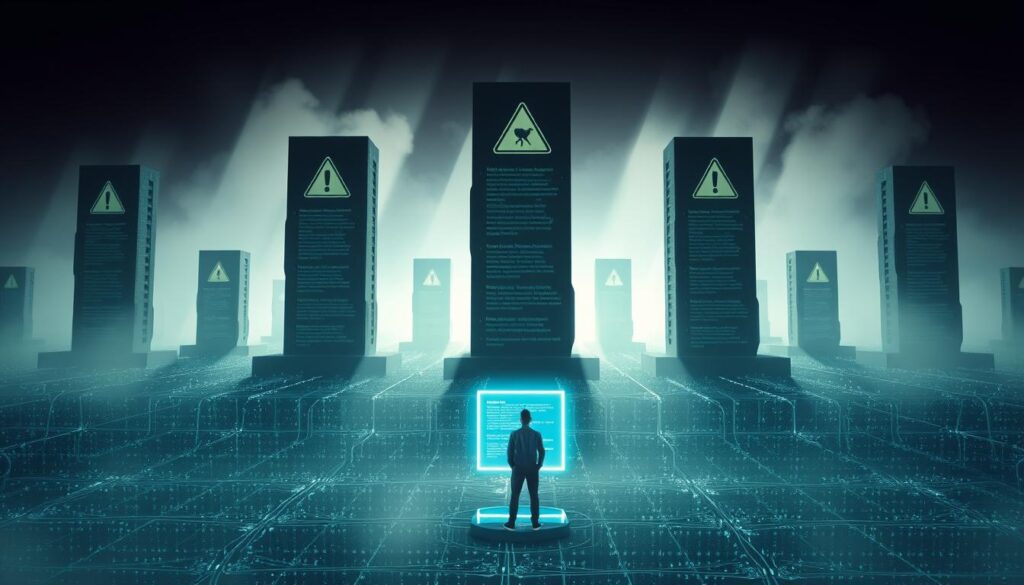Now Reading: Maximise Your NFT Staking Rewards Passive Income
- 01
Maximise Your NFT Staking Rewards Passive Income
Maximise Your NFT Staking Rewards Passive Income

The digital landscape has transformed how we view ownership and value. Unique digital collectibles have evolved beyond simple acquisitions into powerful financial instruments. This shift opens new avenues for asset utilisation that were previously unimaginable.
Many investors now seek ways to generate additional revenue from their holdings without selling them. The blockchain ecosystem offers innovative solutions that allow holders to maintain ownership while earning. This approach represents a significant advancement in digital asset management.
Our guide explores strategic methods to enhance your returns from these opportunities. We break down complex concepts into accessible information suitable for various experience levels. Both newcomers and seasoned enthusiasts will find practical insights to apply immediately.
Key Takeaways
- Digital collectibles have evolved into income-generating assets through innovative mechanisms
- Ownership retention while earning represents a major shift in asset utilisation
- Strategic approaches can significantly enhance your returns from these opportunities
- The blockchain ecosystem continues to develop new revenue streams for holders
- Practical implementation requires understanding both fundamentals and risk management
- Platform selection plays a crucial role in optimising your earning potential
- Immediate application of these strategies can begin your journey toward enhanced returns
Introduction to NFT Staking and Passive Income
The arrival of unique digital tokens has fundamentally reshaped our concept of ownership in the virtual realm. These assets, known as non-fungible tokens (NFTs), have moved beyond simple collectibles to become valuable components of a new digital economy.
The Rising Popularity of Digital Assets
The world of digital assets experienced a seismic shift with the rise of NFTs. Applications now span digital art, gaming items, virtual real estate, and unique collectibles.
This surge in popularity became undeniable in March 2021. The crypto art piece “First 5000 Days” by Beeple sold for $69 million, marking a historic moment. Earlier projects like CryptoKitties, dating back to 2017, first demonstrated the potential of these unique digital items.
Overview of Staking Concepts and Their Benefits
Staking is a mechanism adapted from cryptocurrency ecosystems. It allows holders to temporarily lock their digital assets in a secure platform.
This process generates returns while supporting the network’s operations. The key benefit is adding utility beyond mere ownership. Your art, gaming assets, or virtual land can now produce ongoing value.
This approach creates opportunities within the broader blockchain ecosystem. It represents a significant evolution in how we utilise digital property.
Understanding NFT Staking Rewards Passive Income
Beyond simple acquisition, digital assets can now serve an active role in a holder’s portfolio. This process involves committing your unique digital items to a blockchain protocol.
You maintain ownership rights while your assets contribute to network operations. This mechanism generates additional value on top of your initial investment.
Definition and Core Mechanisms
The core idea mirrors traditional crypto locking but uses non-fungible items. You lock a digital asset for a set period within a secure smart contract.
These automated contracts manage the entire process transparently. They define the locking period and handle the distribution of returns.
This system differs completely from selling or trading. Your asset remains in your possession while it works for you.

How Locking Enhances Digital Asset Utility
This approach transforms static collectibles into productive components. It adds a powerful financial layer beyond aesthetic or speculative value.
The key advantage is creating a continuous stream of earnings. Your digital property becomes an active participant in the ecosystem.
Blockchain technology ensures this happens without intermediaries. Holders receive their returns directly and automatically.
| Model Type | Typical Duration | Flexibility for Holders | Potential Return Profile |
|---|---|---|---|
| Fixed-Term | Specified Period (e.g., 30, 90 days) | Lower – Assets are locked until term ends | Often offers predictable, set returns |
| Flexible-Term | Indefinite or Variable | Higher – Ability to unlock assets sooner | Returns may vary based on participation time |
| Tiered System | Scales with Asset Rarity or Time | Medium – Depends on the tier rules | Higher returns for longer commitments or rarer assets |
How NFT Staking Works and the Underlying Process
Engaging with digital collectibles has moved into a new phase where static ownership transforms into active participation. This process allows holders to put their assets to work within the blockchain ecosystem.
The mechanism involves a series of clear steps, from initial eligibility checks to the final distribution of earnings. Understanding this workflow is essential for successful involvement.

Eligibility and Ownership Requirements
Not every digital asset qualifies for this activity. Each platform sets specific criteria, often tied to particular collections or project affiliations.
Users must hold these eligible items in a compatible digital wallet. Verifying these requirements is the crucial first step before any commitment is made.
Selecting the Right Staking Platform
Choosing where to engage is a significant decision. Different platforms operate on various networks like Ethereum or Binance Smart Chain.
Key factors include security history, user interface clarity, and the structure of potential returns. Research is your best tool for finding a trustworthy service.
The Reward Generation Process
Once assets are committed via a smart contract, the system begins its work. This automated code calculates earnings based on duration and asset traits.
Rewards typically manifest as the platform’s native tokens. The entire process is designed to be transparent and automatic for all participants.
Benefits and Utility of Staking NFT Assets
Modern digital asset management incorporates innovative methods for enhancing portfolio returns. These approaches transform how collectors interact with their digital possessions.
The system offers multiple advantages beyond simple ownership. It creates new opportunities for value generation within the blockchain space.
Generating Passive Income Whilst Retaining Ownership
One significant advantage is the ability to earn returns without selling valuable items. This approach allows collectors to maintain possession while their assets work for them.
Long-term enthusiasts particularly benefit from this model. They can wait for potential appreciation while receiving ongoing benefits.
The process adds substantial utility to digital collectibles. Static items become productive components of a financial strategy.
Portfolio diversification represents another key benefit. This method creates additional revenue streams beyond traditional investments.
Assets gain intrinsic value through their income-generating capability. This makes them more attractive to potential buyers in secondary markets.
The broader blockchain ecosystem also benefits from this activity. It supports network security and maintains decentralisation principles.
These comprehensive advantages appeal to various investor profiles. Both speculative traders and long-term holders find value in this approach.
Risks and Considerations in NFT Staking
Before engaging with asset locking protocols, understanding the associated hazards is essential for informed participation. While digital collectibles offer financial opportunities, they carry inherent risks that require careful assessment.
Market Volatility and Price Sensitivity
The digital asset market experiences significant price fluctuations. These changes can dramatically affect the value of locked items during commitment periods.
Collection-specific demand and broader economic conditions influence returns. Investors face potential value erosion if market trends shift unfavourably while assets remain inaccessible.

Platform Security, Smart Contract Vulnerabilities and Liquidity Issues
Choosing a reliable platform is crucial for asset protection. Security breaches and operational failures present real threats to digital holdings.
Smart contract vulnerabilities can compromise locked assets or disrupt reward distribution. Thorough research into platform history and audit reports helps mitigate these risks.
Lock-up periods create liquidity constraints that prevent quick asset access. This limitation becomes problematic during urgent financial needs or favourable market opportunities.
Understanding these considerations helps investors make safer choices when exploring passive crypto income strategies. Proper due diligence protects against potential losses in this evolving space.
Step-by-Step Guide to Begin Staking NFTs
Taking the first practical steps into digital asset utilisation requires a clear, actionable roadmap. This guide breaks down the journey into manageable phases.

You will learn how to acquire the right items, choose a secure service, and manage your portfolio effectively. Let’s start with building your foundation.
Acquiring Eligible NFTs
Your first task is to obtain digital collectibles that qualify for locking. Popular marketplaces like OpenSea and Rarible offer vast selections.
Before purchasing, always verify a collection’s eligibility for the activity. Check the project’s official website or community channels for confirmation.
Evaluate factors like the collection’s reputation and current market value. This due diligence helps you make a sound initial investment.
Researching and Setting Up Your Staking Platform
Selecting the right service is a critical decision for your security and returns. Compare different options based on their track record and features.
Look for platforms with strong security histories and positive user feedback. The user interface should be clear and easy to navigate for all experience levels.
Once you choose, install a compatible digital wallet like MetaMask. You will need to acquire ETH or other necessary tokens to pay for network fees.
| Feature | High Priority | Medium Priority |
|---|---|---|
| Security Audit History | Comprehensive, recent audits | Basic security measures |
| Supported Collections | Includes your target assets | Limited but popular options |
| User-Friendliness | Intuitive for beginners | Functional for experienced users |
Monitoring and Managing Your Staked Assets
After initiating the process, consistent oversight is essential for success. Regularly check your accumulated earnings through the platform’s dashboard.
Stay informed about any updates to the platform’s terms or reward structures. Market conditions can change, so be prepared to adapt your strategy.
Understanding the commitment period and any early withdrawal conditions protects your assets. This proactive approach helps you maximise your benefits over time.
Popular NFT Staking Platforms and Trends in Digital Assets
The ecosystem for digital collectibles continues to evolve with specialised platforms offering distinct models for asset utilisation. These services provide various ways for holders to engage with their digital property.
Understanding the differences helps investors select the right environment for their goals.
Features, User Experience and Platform Comparisons
Marketplaces like Rarible integrate token locking directly into their ecosystem. This allows RARI token holders to participate in governance while earning additional value.
NFTX introduces an innovative approach by letting users create index funds from their assets. People can mint tradeable tokens representing shares in a vault of locked items.
Gaming platforms demonstrate particularly creative integration. Axie Infinity enables players to commit their in-game creatures to earn governance tokens.
LooksRare’s dual model rewards trading activity with $LOOKS tokens, which can then be recommitted for compounded earnings. The Sandbox connects virtual land ownership with enhanced returns for SAND token holders.
| Platform Name | Primary Focus | Token Earned | Special Feature |
|---|---|---|---|
| Rarible | Marketplace & Governance | RARI | Integrated marketplace functionality |
| NFTX | Index Funds | Vault Shares | Creates fungible tokens from NFTs |
| Axie Infinity | Gaming | AXS | Game-integrated asset utilisation |
| WhenStaking | WAX Gaming Assets | VOID | Specialises in WAX blockchain games |
Emerging Trends and Future Market Opportunities
Collection-specific models are gaining popularity across different blockchains. Projects like CyberKongz offer long-term incentives, with Genesis holders receiving daily tokens until 2031.
Mutant Cats on Ethereum and Doge Capital on Solana demonstrate how projects build dedicated economies around their assets.
The market is expanding beyond art into gaming and virtual real estate. This creates new segments for digital asset investors.
Cross-chain functionality represents a significant future development. It will allow assets from different networks to participate in broader earning opportunities.
Conclusion
The ability to generate returns from static digital items marks a pivotal moment in blockchain technology applications. This innovative approach transforms how collectors perceive their assets’ utility beyond simple ownership.
Digital collectibles become productive components within the broader ecosystem. Investors maintain possession while their items contribute to network operations and governance.
This methodology offers significant benefits but requires careful consideration of market volatility and security concerns. Thorough research and platform selection remain essential for protecting valuable assets.
As the digital assets market evolves, these mechanisms will likely become more sophisticated across various categories. Understanding the complete process positions investors to capitalise on emerging opportunities effectively.
This represents just one component of comprehensive blockchain strategies. Continued education and adaptive approaches will be crucial as new projects and technologies develop over time.
FAQ
What exactly is the process of earning with my digital collectibles?
This process involves committing your non-fungible tokens to a platform’s smart contract for a set period. In return, you receive additional tokens or other benefits, creating a form of earnings without actively trading your assets.
Do I lose ownership of my art or collectible when I commit it?
No, you typically retain ownership of your digital asset. The process is similar to placing an item in a secure vault; you still own it, but it is temporarily locked to generate value within the platform’s ecosystem.
What should I look for when choosing a service for my tokens?
Key factors include the platform’s reputation, the transparency of its smart contracts, the annual percentage yield offered, and the security measures in place. Researching user reviews and the project’s governance model is also crucial.
Are there significant risks involved with this activity?
Yes, potential risks exist. These can include smart contract vulnerabilities, market volatility affecting the value of your rewards, and platform-specific issues like liquidity shortages. It is essential to understand these before participating.
How does this practice benefit the wider blockchain ecosystem?
It enhances the utility of digital assets by providing holders with more ways to engage. This can increase liquidity, encourage long-term holding, and support projects within the cryptocurrency and gaming sectors by fostering a more active community.
Can I use any non-fungible token I own?
Not always. Eligibility depends on the specific platform. Some services support a wide range of assets from various projects, while others are designed exclusively for tokens from a particular collection or gaming universe.
What emerging trends are shaping this market?
Current trends include the integration of these mechanisms into play-to-earn games, the offering of governance rights to participants, and partnerships with real-world brands. These developments are creating new opportunities for investors and collectors.













